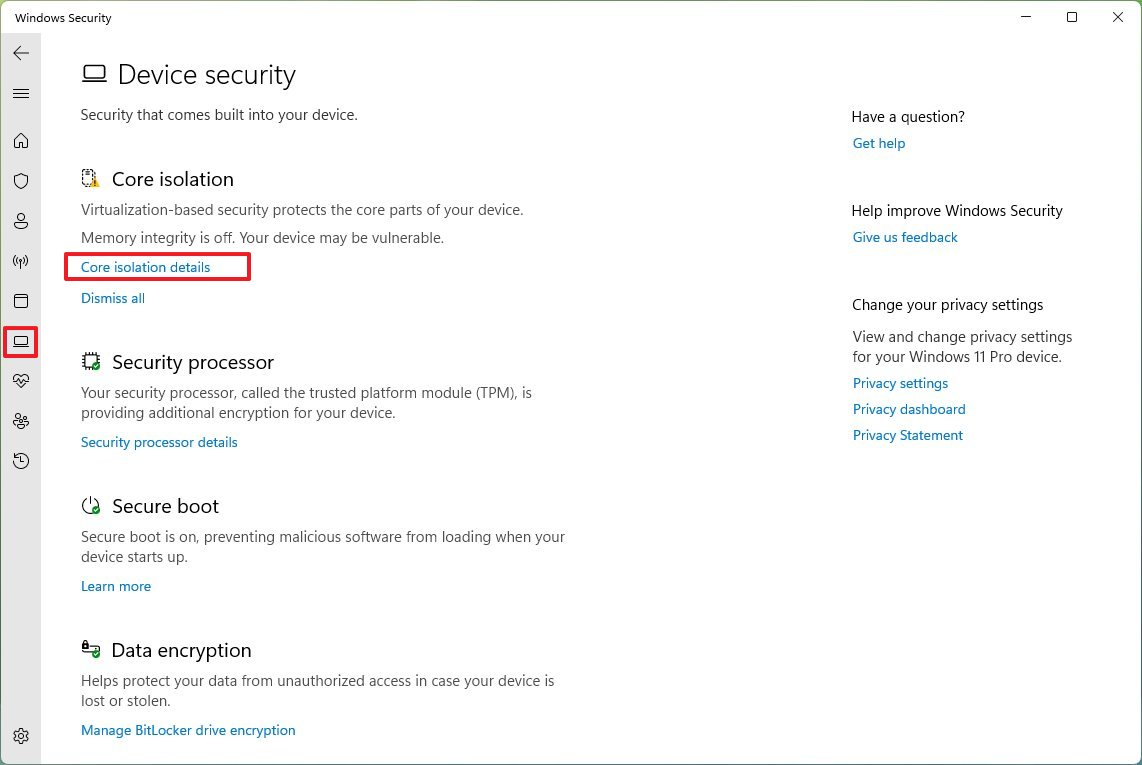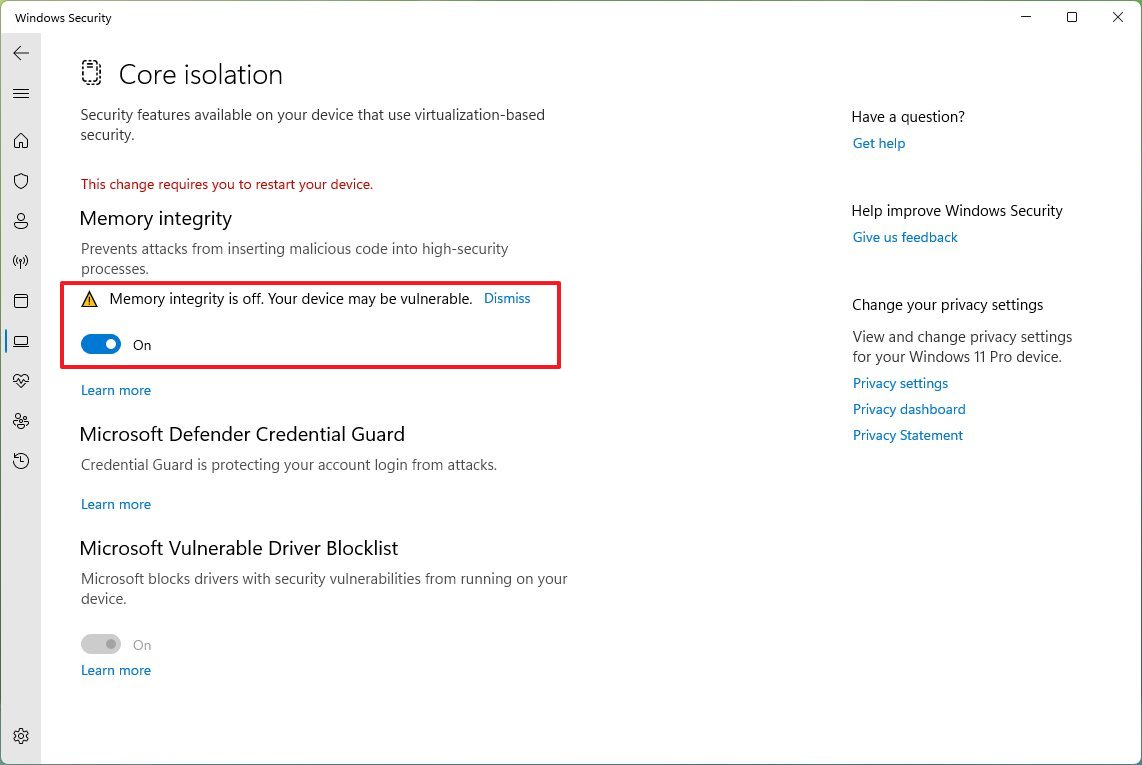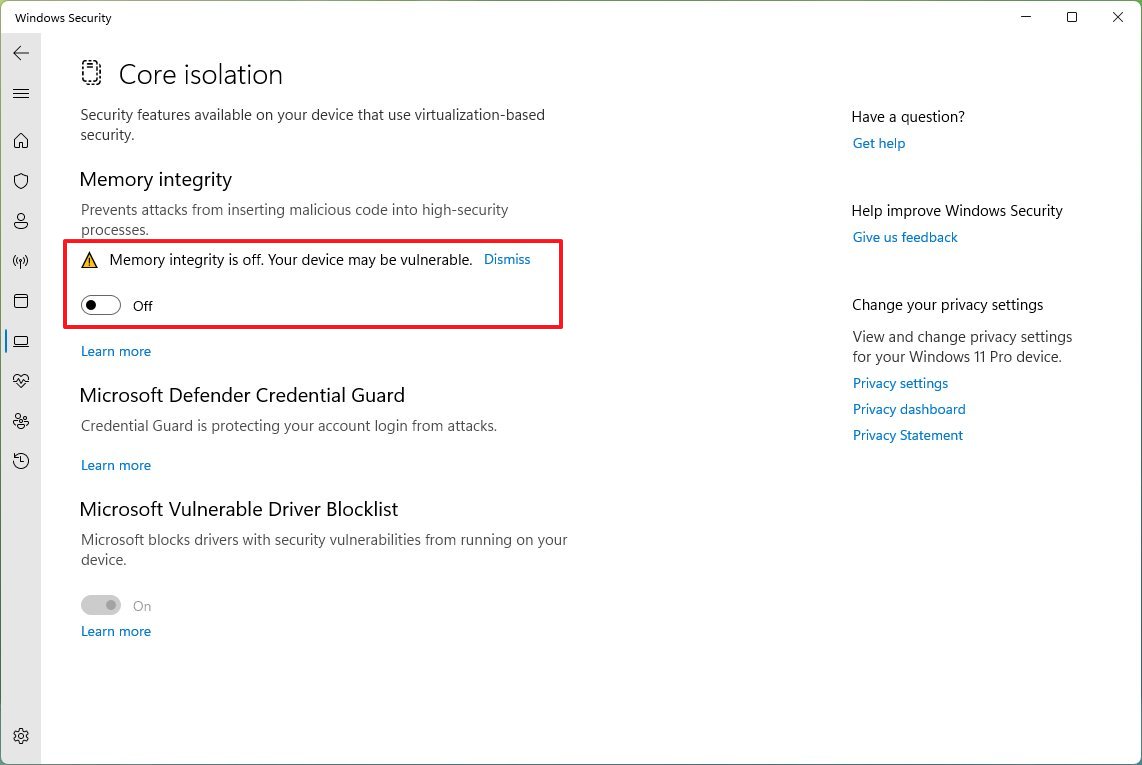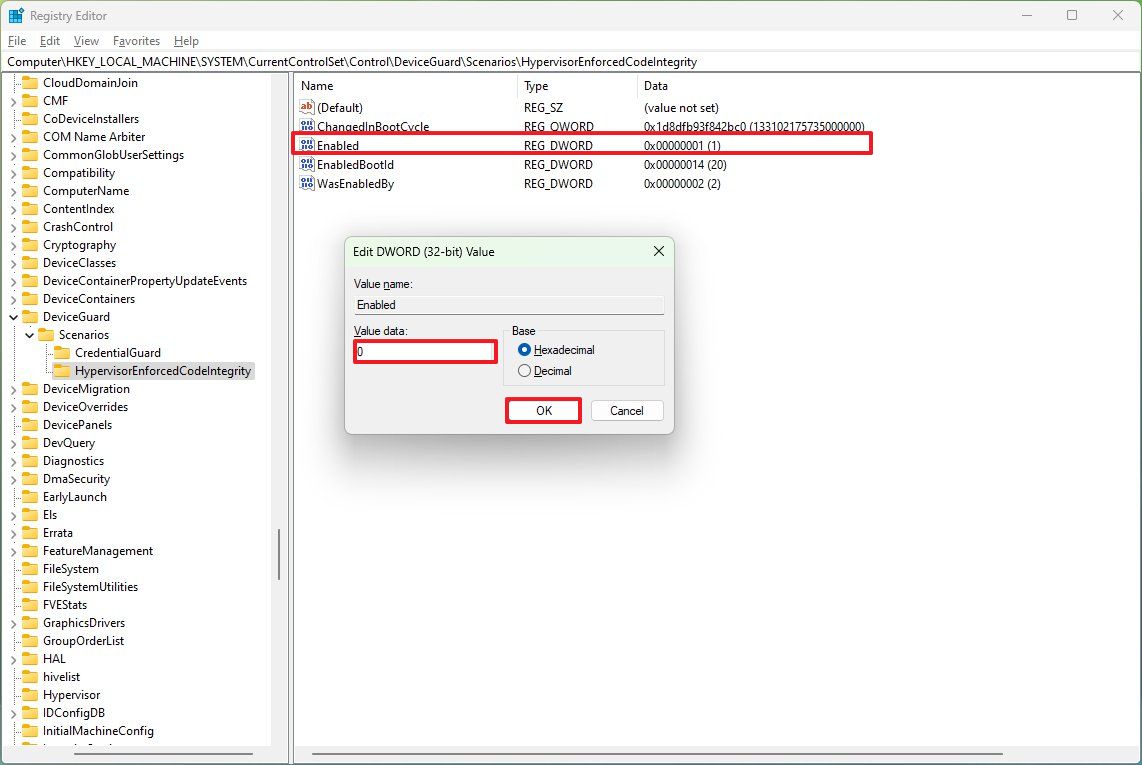On Windows 11, Core isolation is a set of virtualization-based security features that offer an additional layer of protection from hackers and malicious code. One of the main features is “memory integrity,” which prevents malware and other malicious code from hijacking high-security processes.
The protection works by making the kernel memory pages executable only if they pass the integrity check. The Core isolation features, including memory integrity, should be enabled by default with the Windows 11 2022 Update. However, if you’re still on version 21H2 or the feature isn’t running, you may want to enable it manually.
This guide will walk you through the steps to manage the Core isolation feature on Windows 11.
How to enable Core isolation’s Memory integrity on Windows 11
To enable Core isolation on Windows 11, use these steps:
- Open Windows Security.
- Click on Device security.
- Under the “Core isolation” section, click the “Core isolation details” option.

- Turn on the Memory integrity toggle switch to disable the feature.

Once you complete the steps, restart the computer to apply the setting to protect your computer from malicious code injecting into high-security processes.
How to disable Core isolation’s Memory integrity on Windows 11
If the feature conflicts with other components, you can always disable it. Also, if you use your computer for gaming, Microsoft recommends disabling Core isolation (in addition to the “Virtual Machine Platform” from the Windows Feature settings) to boost performance.
To disable Core isolation, use these steps:
- Open Windows Security.
- Click on Device security.
- Under the “Core isolation” section, click the “Core isolation details” option.

- Turn off the Memory integrity toggle switch to disable the feature.

After you complete the steps, restart the device to apply the changes.
In the case that you disable Core isolation to play games on Windows 11, it’s a good idea to re-enable the feature after you’re playing.
Disable Core isolation from Registry
Warning: This is a friendly reminder that editing the Registry is risky and can cause irreversible damage to your installation if you don’t do it correctly. It’s recommended to make a full backup of your computer (opens in new tab) before proceeding.
If the option to turn off Core isolation is greyed out, you may be able to disable the feature from the Registry:
- Open Start.
- Search regedit and click the top result to open the Registry Editor.
- Browse the following path: HKEY_LOCAL_MACHINESYSTEMCurrentControlSetControlDeviceGuardScenariosHypervisorEnforcedCodeIntegrity
- Double-click the Enabled key and change its value from 1 to 0.
- Click the OK button.

Once you complete the steps, restart the computer to complete the setup.
More resources
For more helpful articles, coverage, and answers to common questions about Windows 10 and Windows 11, visit the following resources:




